Have you ever been interested in learning How to Grow Hens and Chicks?
Do you think it’s too hard?
Or are you unsure of how to start?
Or where to go for the best information?
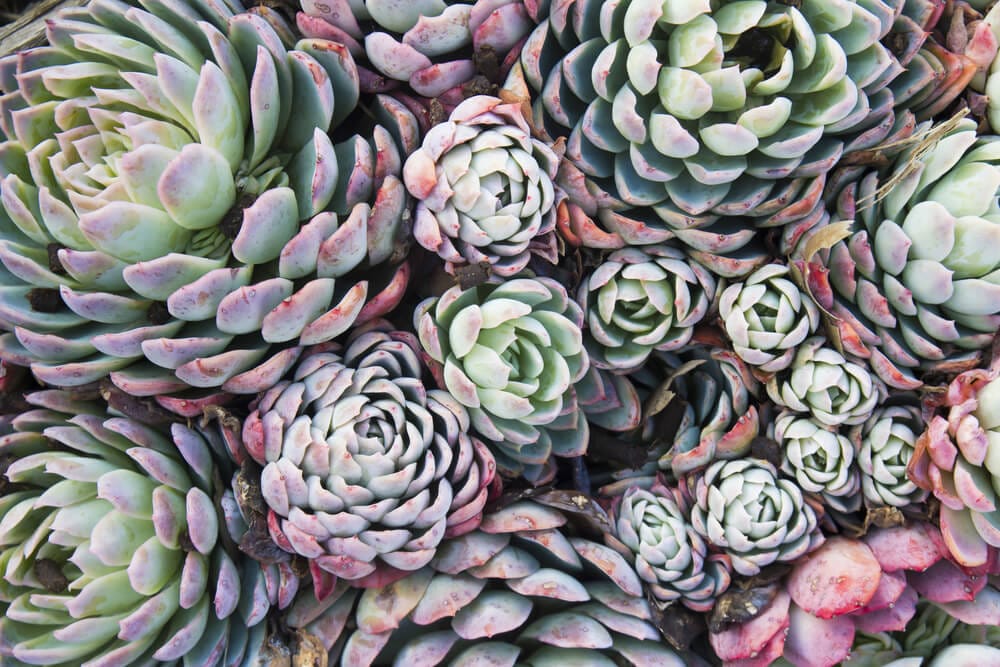
Well, I have great news!
I have created How to Grow Hens and Chicks Indoors & Outdoors so that you can enjoy this beautiful succulent all year, no matter where you live.
And if you scroll to the bottom you will find 10 Frequently Asked Questions and Answers to help make growing Hens and Chicks that much easier!
Choose These 3 Hens and Chicks Types (Tip #1)
Are you interested in hens and chicks as a houseplant? Or maybe to add color or uniqueness to your yard or garden?
Not only is Hens and Chicks a beautiful succulent to have as an indoor plant or even planted in a garden, but it has many natural uses that you can use it for.
I am recommending 3 general types of Hens and Chicks Plants when learning how to grow aloe.
These are the easiest hens and chicks to grow and care for regardless of whether they are in a container or in your garden.
1. Sempervivum Hens and Chicks
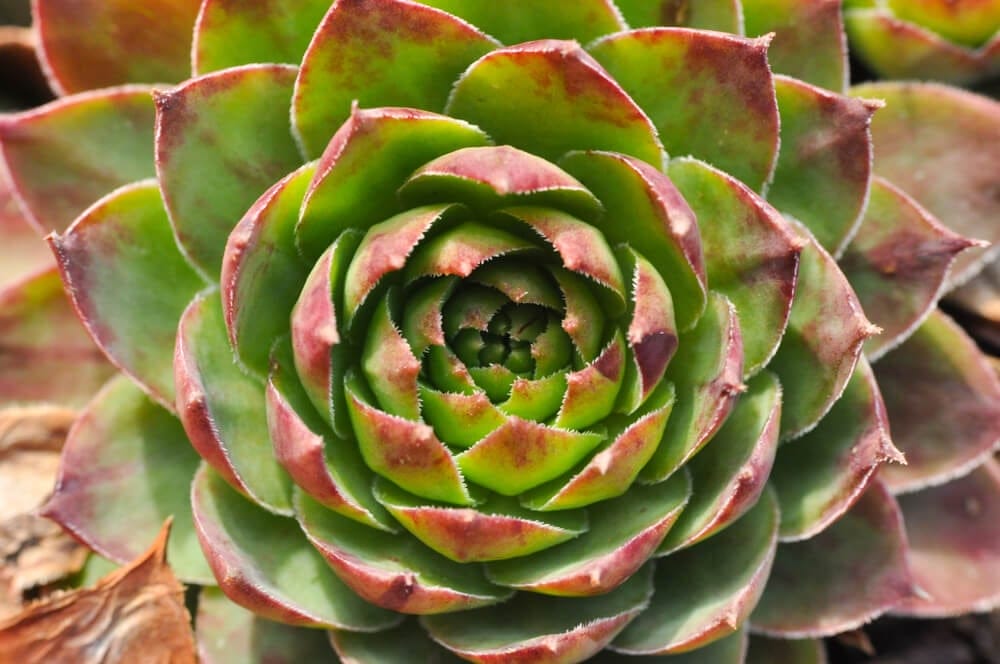
This is the most popular type of Hens and Chicks to grow and also the easiest type to grow indoors and outdoors.
This succulent has beautiful colors, does not grow to be extra large, and can complement any type of garden or indoor spacing.
These hens and chicks grow babies on runners and all you have to do is pull them off and plant them elsewhere. The offshoots are some of the fastest growing “babies” and easiest to take hold to the soil.
2. Jovibarba Heuffelii Hens and Chicks

Jovibarba Heuffelii is another popular type of that is popular among gardeners and succulent growers.
This is similar to the Sempervivum except that it does not produce “chicks”. Instead, the “babies” are produced within the plant and it must be split in order to propagate them.
You should also expect beautiful colors of yellow from this type of hen and chick succulent.
3. Jovibarba Rollers Hens and Chicks
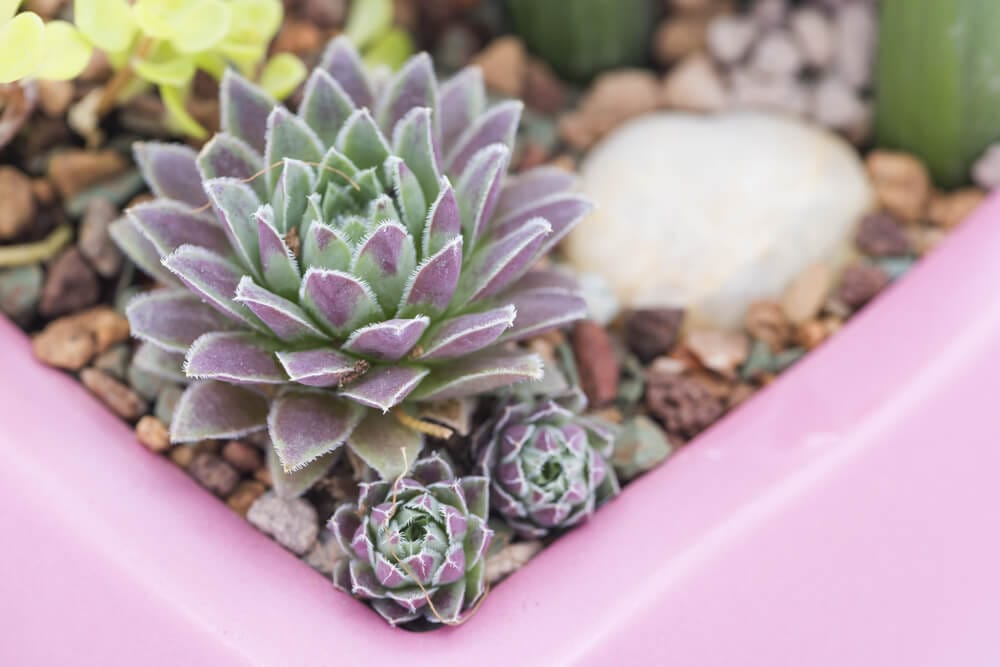
Jovibarba Rollers are the third most popular type of hens and chicks to grow and is one of the most popular succulents to grow indoors.
This type of hens and chicks lightly produces “chicks” that easily can be popped off and replanted.
It usually recommends to take and replant the chicks, rather than the seeds of these hens and chicks to preserve the natural characteristics of this succulent.
How to Plant Hens and Chicks Indoors (Tip #2)
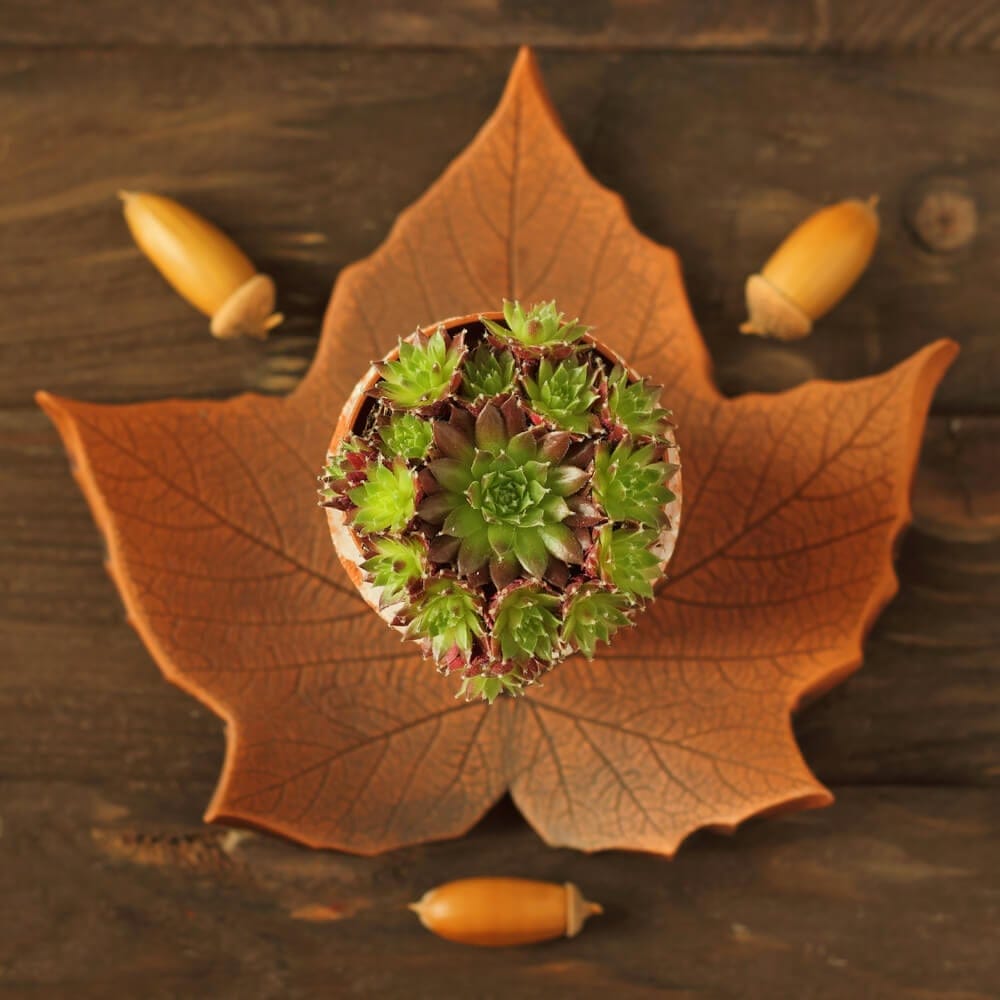
When learning how to grow hens and chicks indoors you should follow the below basic and simple steps.
Step 1
Fill a small pot (that has a hole on the bottom for draining) about 50% full with well-draining soil. The best type of soil is rich and dry.
Next, add 25% of organic compost to help encourage fast growth and flower blooms.
Step 2
Next, place your hens and chickens into the pot. You will want the root ball (where the roots meet the plant) planted slightly below the top of the pot.
Cover the root ball with your soil and compost mix. Never cover the leaves of your hens and chicks.
Step 3
It is then highly recommended that you cover the dirt with small, white pebbles.
This will help minimize evaporation and will also help retain heat within your pots, which is great if you live in a colder climate.
Step 4
Wait 1 week before you water your Hens & Chicks.
Hens and Chicks do not need to be watered immediately because they keep the water supply in their leaves for long periods of time.
The reason not to water new or damaged hens and chicks roots can cause root rot. This will stunt or destroy your plant.
Step 5
Hens and Chicks prefers at least 8 – 10 hours of sunlight to grow best.
In order to do this you should place it in front of a window that is facing west or south if you live in the northern hemisphere or west or north if you live in the southern hemisphere.
If you do not believe you will get enough sunlight or heat through your window then you will want to purchase a grow light and a heat mat.
If your leaves begin to turn brown they may be getting too much sunlight and you will want to place your plant in the shade towards the evening hours.
Step 7
Most Hens and Chicks Plants do not require fertilizing to grow.
If you do decide to fertilize, it is best to do so in late spring right before the growing season begins.
Step 8
If you notice that your hens and chicks begin growing leaves or “pups” along with the soil up against the container edges then it is time to transplant your plant.
It is recommended that you move your hens and chicks plant to a container that is twice the size of your current pot.
How to Grow Hens and Chicks in a Garden (Tip #3)

When learning how to grow hens and chicks in a garden you should follow the below basic and simple steps.
Step 1
If you would like to keep your hens and chicks in a garden all year then you need to live in USDA hardiness zones 9 – 11. If you live outside of these zones there is a chance cold weather will kill your succulent.
Also, you should make sure you plant your hens and chicks in a garden that will be kept at temperatures above 25 degrees Fahrenheit in the winter.
Raised Garden Beds tend to keep your succulent warmer in the winter than traditional gardens.
- Related: Best Raised Garden Beds
In addition, you should plant your hens and chicks area of your garden that will get 8 – 10 hours of direct sunlight.
Step 2
Next, plant your hens and chicks in your garden or in a spot in your yard that has well-draining soil. And it is recommended to mix compost into your soil when planting your succulent.
Dig a hole that is twice the size of your root ball (where the roots meet the plant).
Cover the root ball with your soil and compost mix. Never cover the leaves of your hens and chicks.
Step 3
It is then highly recommended that you cover the dirt with small, white pebbles.
This will help minimize evaporation and will also help retain heat within your pots, which is great if you live in a colder climate.
Step 4
Wait 1 week before you water your Hens and CHicks.
Hens and Chicks does not need to be watered immediately because they keep the water supply in their leaves for long periods of time.
The reason not to water new or damaged Hens and Chicks roots can cause root rot. This will stunt or destroy your plant.
In the summer you will want to water your hens and chicks once a week. When your plant goes dormant in the winter you will want to water it once a month.
Step 5
Most Hens and Chicks Plants do not require fertilizing to grow.
If you do decide to fertilize, it is best to do so in late spring right before the growing season begins.
Frequently Asked Questions (FAQs)
#1. How do I Propagate New Plants from my Adult Hens and Chicks?
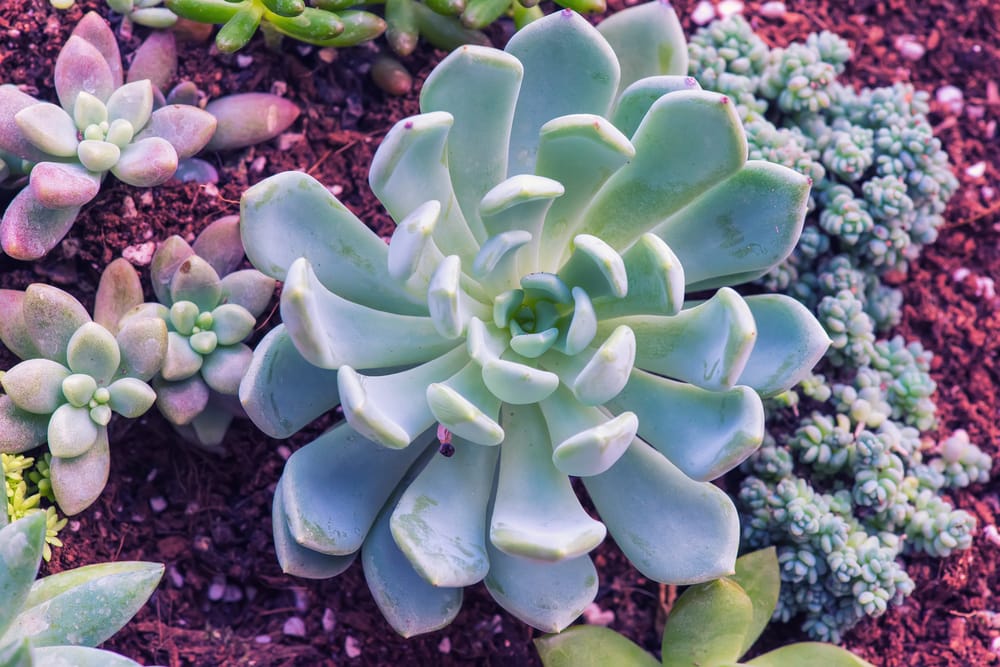
In order to propagate new plants from your adult Hens and Chicks you should follow the below steps:
1. If growing your Hens and Chicks in a container you should wait until it fills the container. If you are growing your Hens and Chicks in a garden you should wait 2-3 years (until new pups have grown and your “old” plant begins to die”.
2. Wait until “young pups” begin emerging from your hens and chicks. “Young Pups” are new hens and chicks that begin growing out of the existing plant.
3. Next, pick the branch you want to cut and cut it so there are 2 inches of leaves below the stem.
6. Then leave the cut pup in the open air for a week to heal.
7. Next, insert the stem into a 2-inch pot fill with the potting mix described above.
8. Water immediately and then once a week.
9. Follow the care steps as described above.
#2. How do I Care for my Hens and Chicks

In order to have the best success growing Hens and Chicks, there are several care tips you should take advantage of. These include:
1. Fertilize once a year. You should fertilize your hens and chicks in late spring or early summer before your succulent begins growing again.
2. Remove weeds as they grow in your pots or around your Hens and Chicks. Because Hens and Chicks are planted in loose soil gently pull weeds out in order to minimize the disturbance to your plant.
3. If your Hens and Chicks leaves are low to the ground or look flat then you need to increase the amount of sunlight to it.
4. If your leaves or pups are brown then it may mean your plant is receiving too much sunlight. Move it or transplant it to a less sunny area.
5. If your leaves are thin and curled then you need to water one more time a week than you are doing now.
6. If your leaves turn yellow or if they begin falling apart then you have watered too much and should reduce how often you water by 50%.
#3. How do I Prune my Hens and Chicks plant?

Pruning a Hens and Chicks plant can be easy if you follow the few simple steps below:
1. Wait until the stem and bloom dry out and die. You will know this when it turns a brown color.
2. Next, snap off the stem of the bloom. This will promote young pup growth.
3. If need be, remove the outermost pups that begin to grow. Never remove more than 20% of the leaves at once.
#4. How do I Use Hens and Chicks?
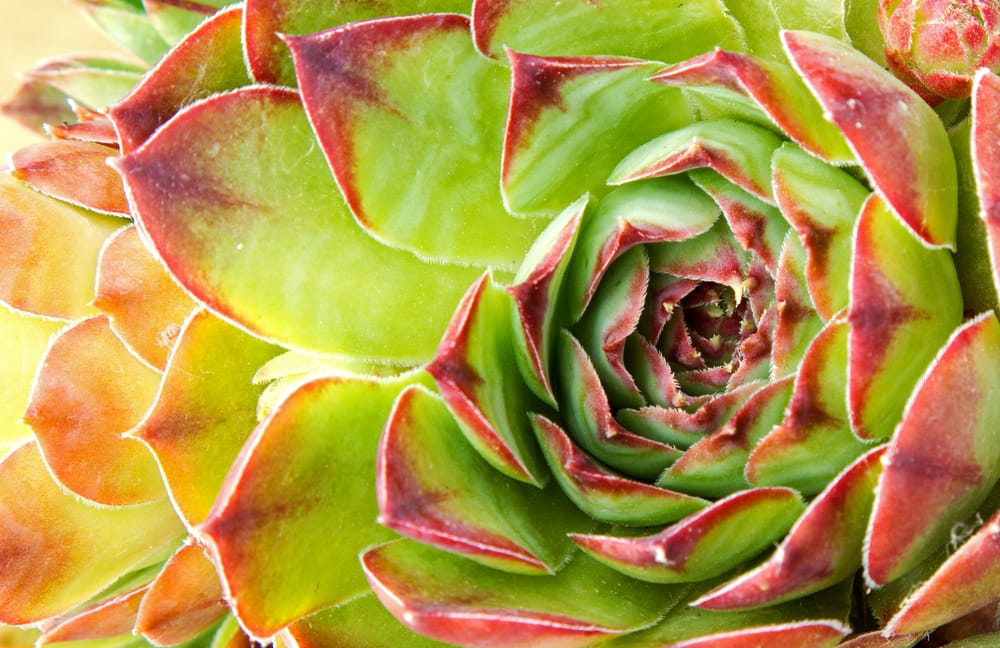
Hens & Chicks is a succulent that has many uses, but few people known about them.
You can use hard-pressed hens and chicks for the following:
- soothe skin conditions and burns
- soothes insect bites and ulcers
- sore nipples, fungal infections, and ulcers
- hemorrhoids
#5. What Supplies are Needed to Grow Hens and Chicks?
Below, is a list of the proper tools you need to effectively grow hens and chicks:
– Garden Container
– Hens and Chicks ant
– Well – Draining Soil
– Organic Compost
– Fertilizer
– Watering Can
– Hand Shovel

#6. How do I Get My Hens and Chicks Plant to Flower?
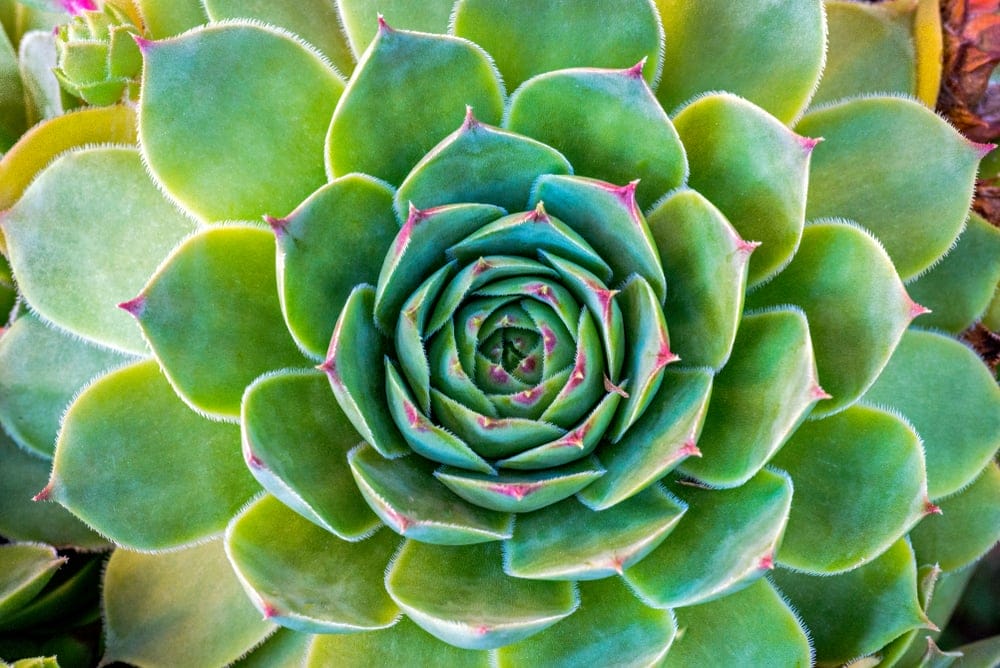
When Hens and Chicks flowers bloom its beautiful. In order to have the best bloom possible it is important to make sure your succulent is getting enough water, sunlight, and heat.
It usually will take 3 years before your hens and chicks flower. Depending on the climate and stress to the plant they may bloom earlier. Once a hen and chick flowers they will die and you will need grow the pups.
For outdoor hens and chicks to bloom you will want to keep your plant in as much sunlight for as long as you can during the spring and summer.
Also, make sure your succulent is getting enough water. This should be enough to prevent your succulent from drying out, but not enough that the soil is always damp.
#7. What are Common Pests to Hens and Chicks?
Hens and Chicks is susceptible to the usual indoor pests like mealybugs and the outdoor pests like spider mites and aphids.
To prevent common pests from attacking your plant make sure not to overwater it. In addition, you will want to spray it with sevin insecticide. This will help encourage your plant to stay healthy.

#8. What are Common Diseases to Hens and Chicks?
Hens and Chicks is susceptible to root rot, soft rot, fungal stem rot, and leaf rot.
In order to prevent these diseases, you should not overwater your plant. Also, do not water the leaves of your plant.
#9. How do I Harvest Hens and Chicks?
It is quite easy to harvest hens and chicks.
After you locate the new pup, simply break it off the stem where it meets the parent succulent.
That’s all! It is literally that easy!
—
#10. How do I Store Hens and Chicks?
You can store Hens and Chicks one of three ways:
1. You can wrap the entire Hens and Chicks leaf in plastic wrap and place it in the refrigerator. Hens and Chicks will last 4-5 days this way.
2. You can place the entire Hens and Chicks leaf in a freezer bag and place it in the freezer. Hens and Chicks will last 6-8 months this way.
3. You can leave your Hens and Chicks in a plastic bag at room temperature. Hens and Chicks will last 3-4 hours this way.





